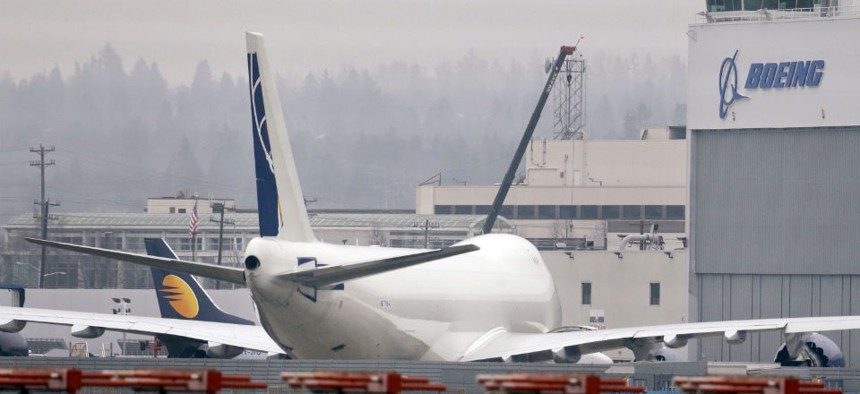
Boeing has received $64 billion in federal loans and loan guarantees since 2000, nonprofit says. Elaine Thompson/AP file photo
Nearly Half of the Largest Federal Contractors Are Also Receiving Federal Grants and Loans
Nonprofit’s “corporate welfare” study names Boeing as top “double dipper.”
Forty-nine of the federal government’s top 100 contractors also won grants, loans or tax credits over the past 15 years, according to a study released on Tuesday by the nonprofit research center Good Jobs First.
Two-thirds of the $68 billion in federal business grants and tax credits since 2000 went to large corporations, said the study and update of an accompanying database that includes federal data for the first time.
The federal contractor with the most grants and allocated tax credits was General Electric, with $836 million, mostly from the Energy and Defense departments, the study found. The “double dipper” with the most loans and loan guarantees was Boeing Co., with $64 billion in assistance from the Export-Import Bank. Boeing’s “more than $18 billion in fiscal 2014 contract awards, combined with the $457 million in federal grants and $64 billion in federal loans and loan guarantees since 2000, make it exceptionally favored by Uncle Sam,” the nonprofit wrote.
The Good Jobs First database, an expanded version of the group’s Subsidy Tracker that since 2013 has followed state and local “subsidies,” now contains more than 160,000 entries from 137 federal programs.
“Our hope is that the new Subsidy Tracker will serve as a resource in the ongoing debates over federal assistance to business," said Philip Mattera, principal author of the study and creator of Subsidy Tracker.
The study—which focuses on federal policies that allow companies and financial institutions to receive bailouts, subsidies and allocated tax credits—may also shed light on the complex corporate structures that frustrate agency efforts to separate small businesses from large companies to meet federal small business contracting goals.
“Through USASpending.gov and other resources, the federal government is quite transparent about those of its subsidy activities in which awards are made to specific companies,” the study acknowledged. “The problem is that the information is spread out among numerous sources that in many cases are difficult to find. Although a large portion is contained in USASpending, it is not easy to separate subsidy information from the other types of grant and loan awards (as well as contracts) contained in that database.”







